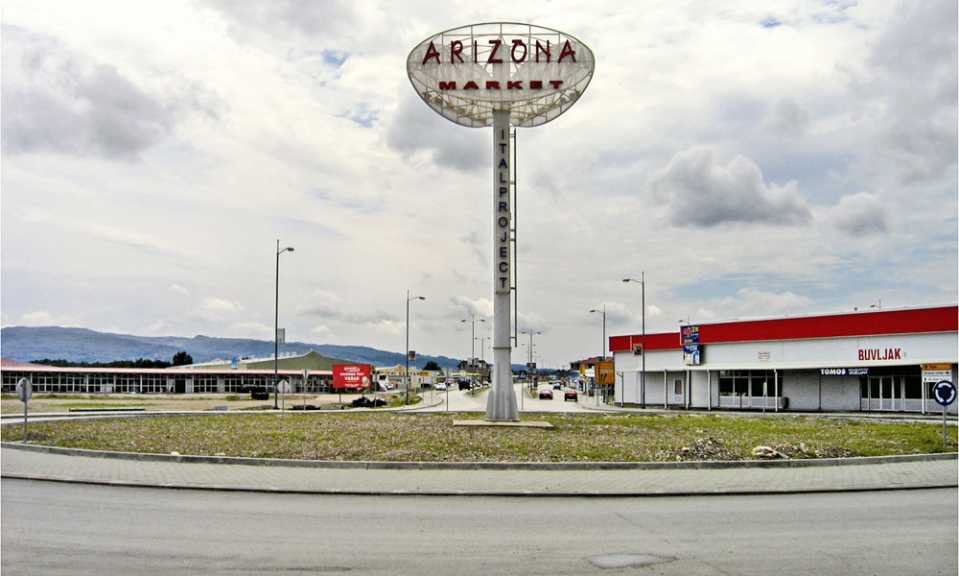
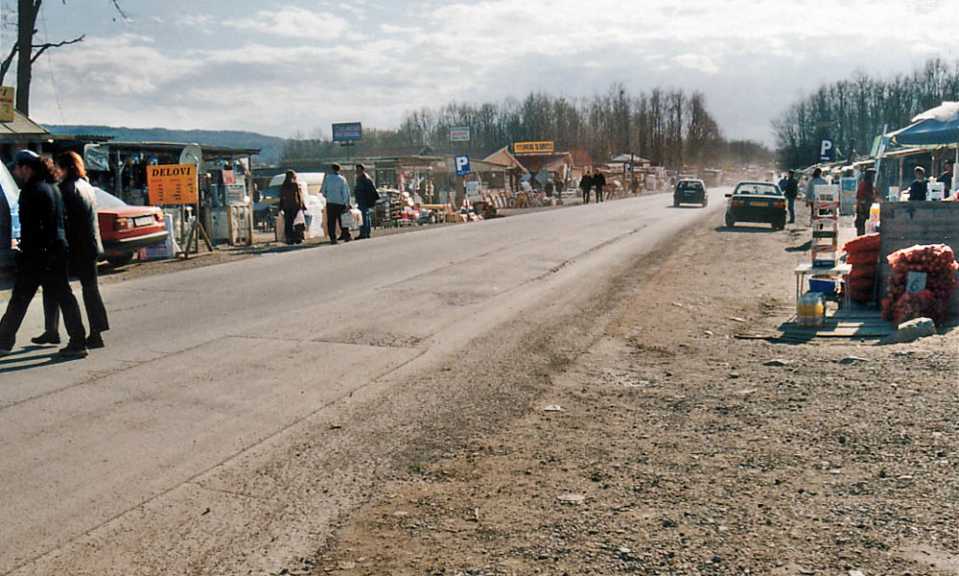
‘Arizona Road’ in 2001
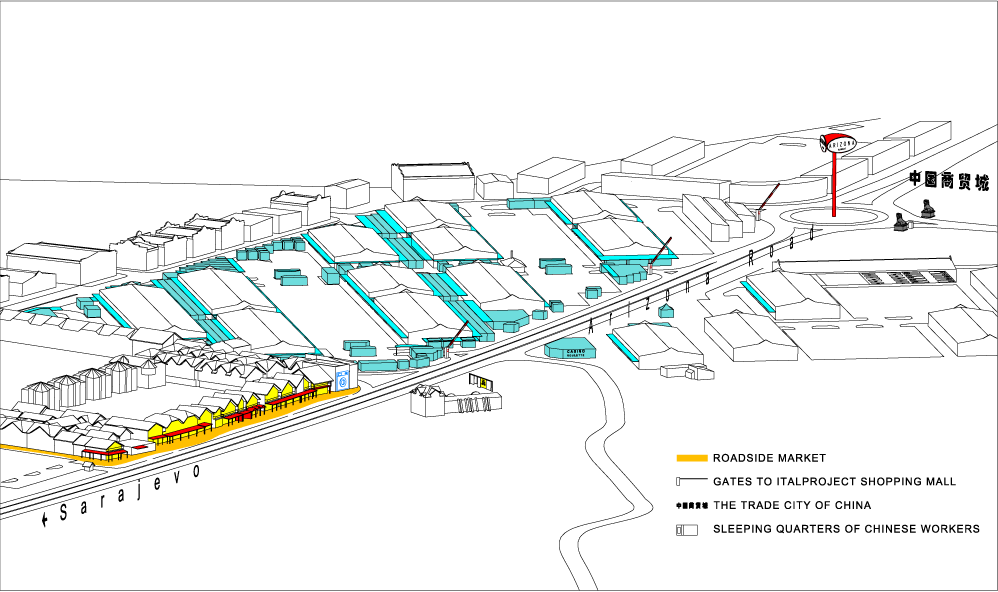
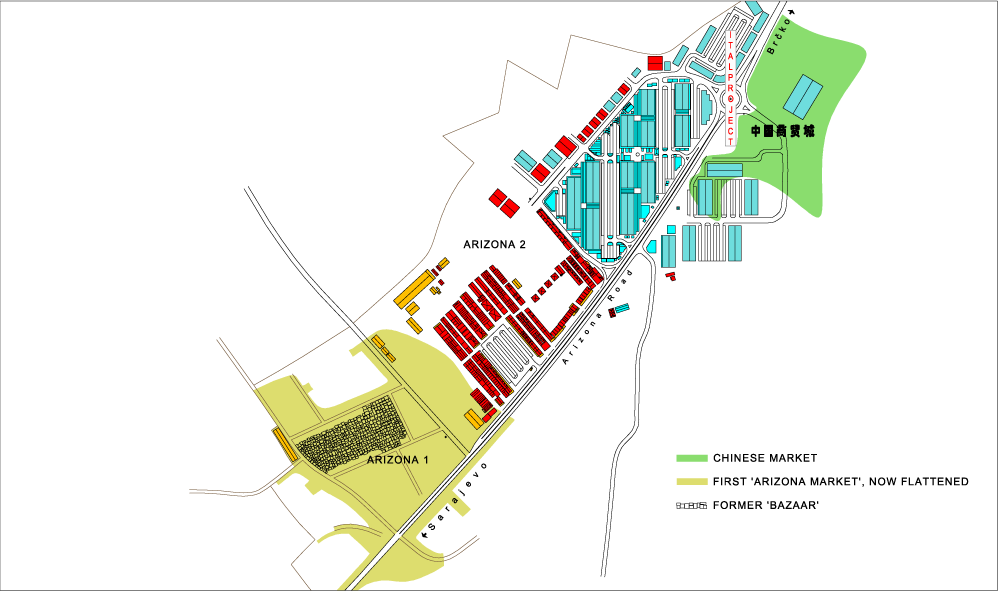
Entry to the market via metered parking lots
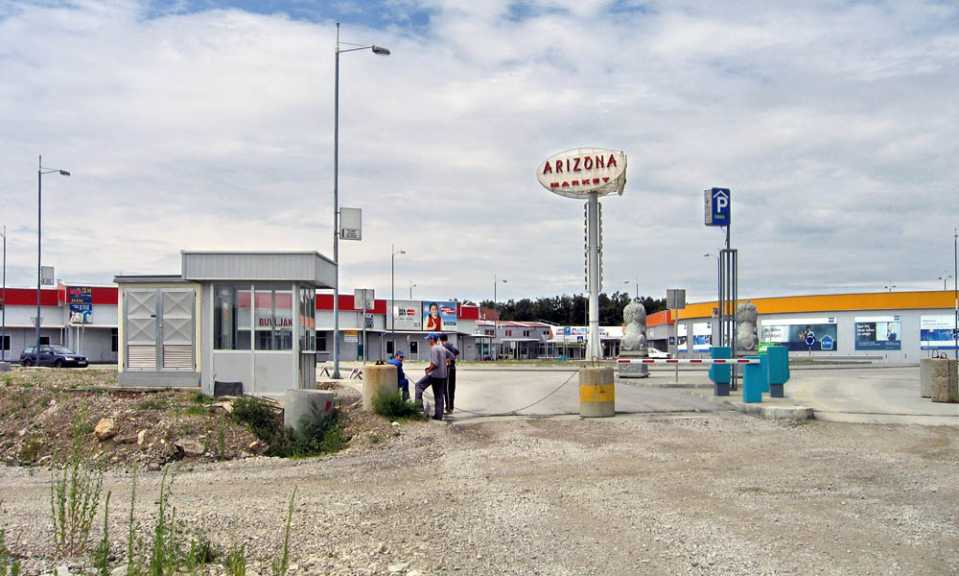
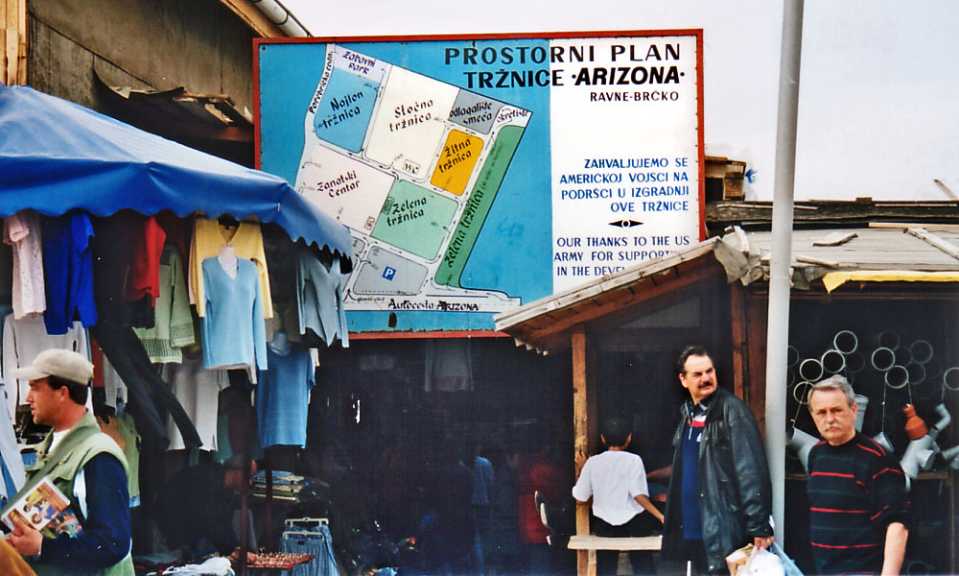
Entrance to bazaar-like heart of the market in 2001
Warehouse structures erected by Italproject now housing the new indoor markets
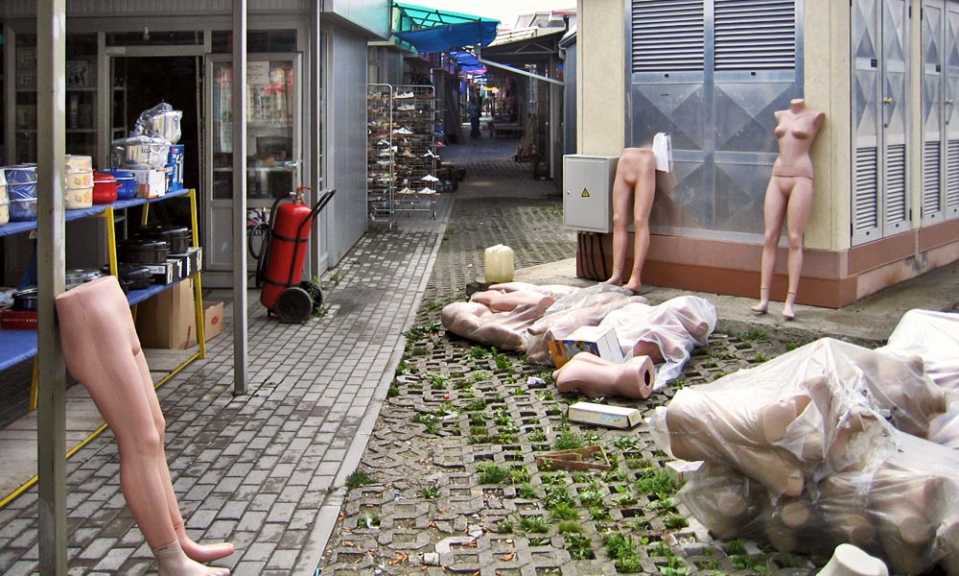
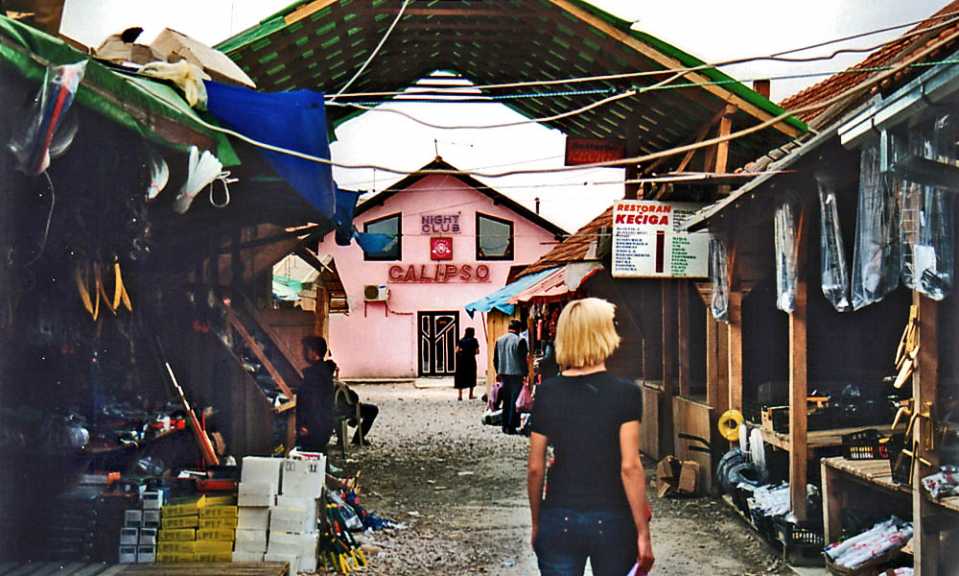
One of the nightclubs at Arizona Market in 2001
Less frequented warehouses partly used as sleeping quarters for Asian workers
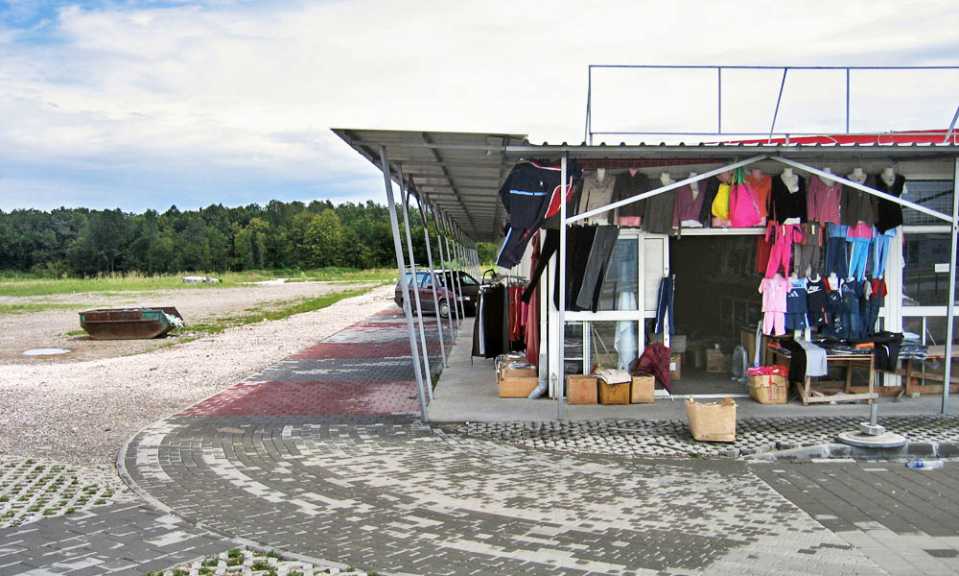

A UN vehicle at the market in 2001
Commercial development where building the facade is part of the individual fit-out
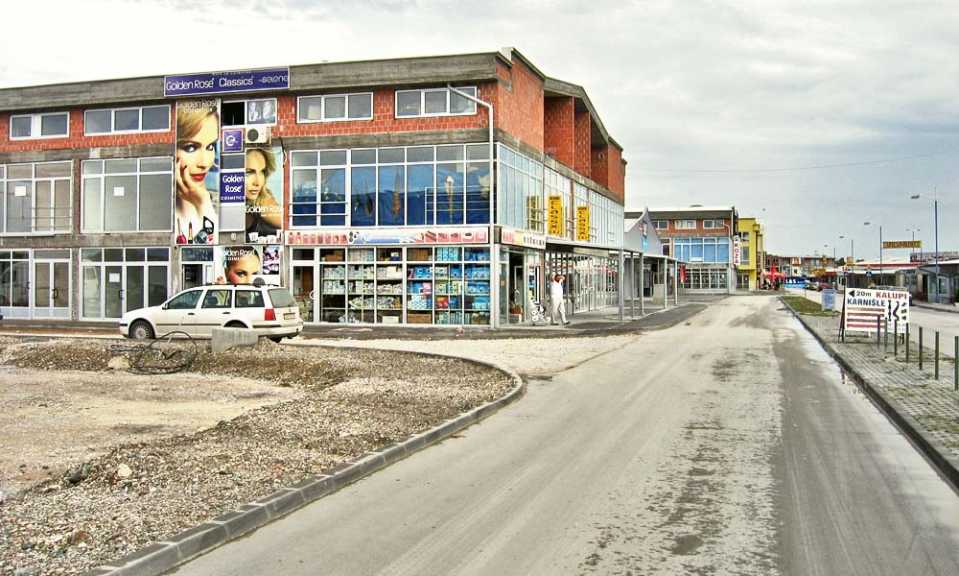
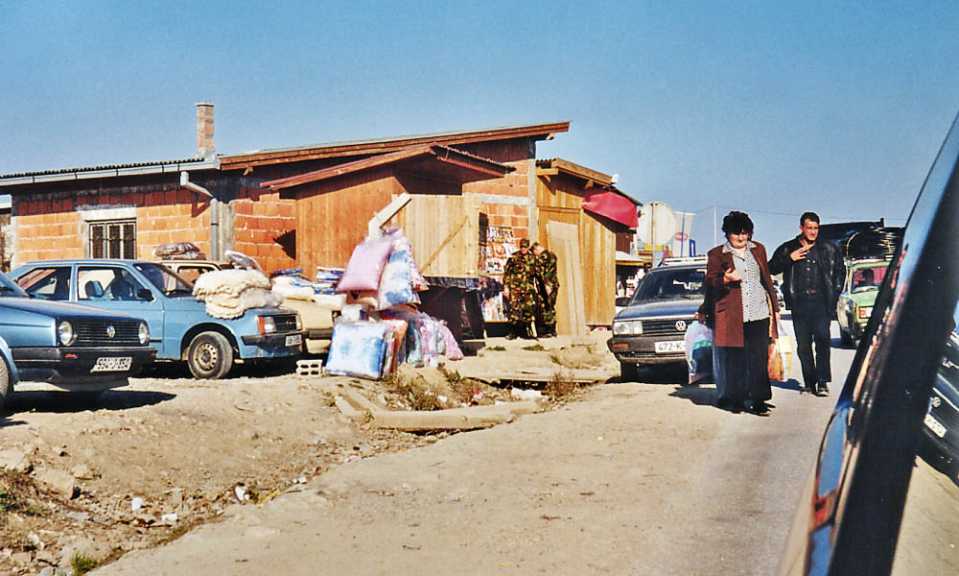
Members of the International Community browsing magazines in 2001
Decisive for the continued development of Arizona Market was the fact that, unlike most other informal markets, it arose on the open fields with the support of the armed forces. In the years that followed, the continuous growth of economic activities at the site and the self-organisation of a market environment were extolled as a model for promoting the sustained development of communications and community structures between former wartime enemies.
Supplementing the simple market facilities and mobile sales, the first houses soon arose, presaging the emergence of a self-organised urbanisation process on the site. However, as time went by, ever more bars and motels operating in these huts and houses started to accommodate a form of trade that made it increasingly difficult to sell – at an international level – the success story of peace based on the market economy. For at Arizona Market, the real money was made through prostitution and trafficking in human beings: with women and girls who were being brought in from Eastern Europe. According to reports, they were rounded up on the streets and resold like cattle from one bar owner to the next.
Eventually, on 26 October 2000, the International Community (OHR, OSCE, UNMIBH and SFOR) announced a package of measures designed to purge Arizona Market of such illegal activities. These measures focused on regulating the issue of licences and tax revenues, and relocating the market by June 2001 to a new site that would offer all the necessary facilities and safety features (1). The solution to this ‘abuse’ of the market as implemented by the International Community thus followed the earlier mentioned model of privatisation aided by authorative regulatory measures.
In February 2001, the supervisor ordered the closure of the existing market (2). In December that year, ItalProject, an Italian-Bosnian-Serbian consortium, won a tender to establish and operate a new market. The consortium signed a 20-year leasing agreement with the district administration that granted it the right to retain 100 per cent of the rental income for a period of seventeen years in return for developing the infrastructure. In a later phase of development, a complexly structured economic and trade base for the entire south European area was to be established that would include multiplex cinemas, hotels, casinos and a conference centre.
read more...
read more...
read more...
read more...
read more...
read more...
read more...
read more...
read more...
read more...
read more...
read more...
read more...
read more...